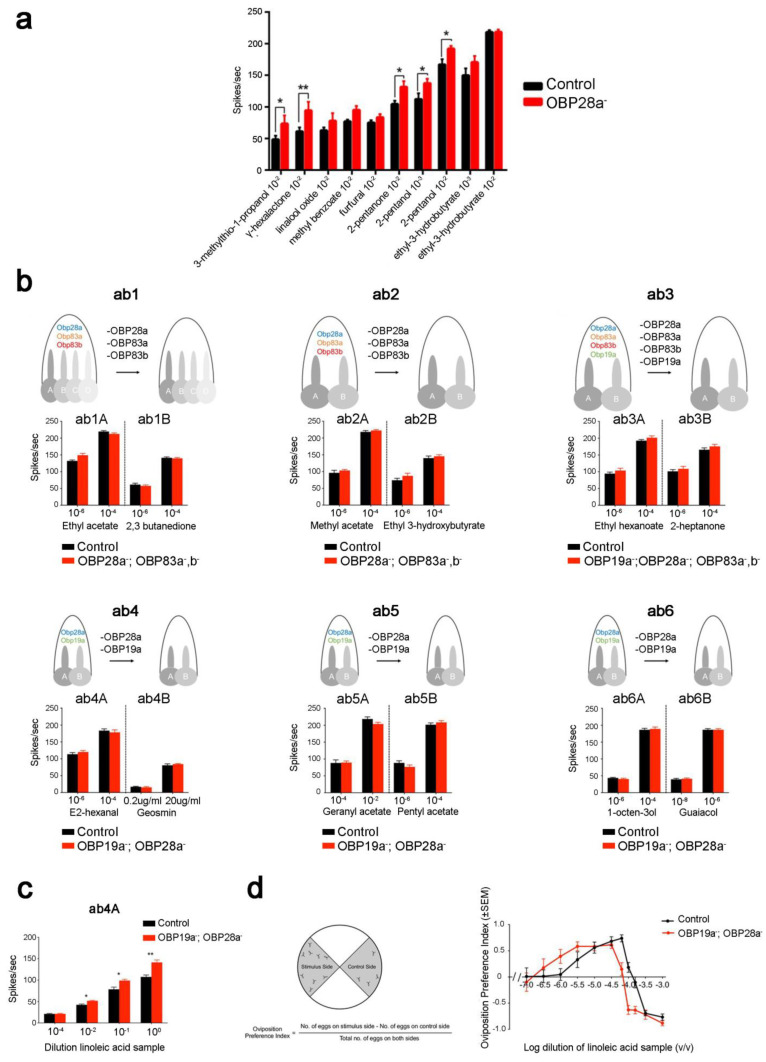Figure 7.
Role of OBP28a in the sensitivity of flies to general odorants. (a) Electrophysiological responses of ab8 neurons in control and OBP28a mutant flies to 0.5-s pulses of several chemical classes of odorants. Significant differences are indicated as *: p < 0.05, **: p < 0.01. (b) Electrophysiological responses of individual ORNs in ab1-ab6 sensilla of control and mutant flies. Mutant flies are deleted for the genes coding for abundant OBPs; their responses are shown to 0.5-s pulses of strong ligands. The deletion of abundant OBPs did not affect the mutant responses (Mann-Whitney U test). (c) Electrophysiological responses of ab4 sensilla towards linoleic acid in control and in [OBP19a-; OBP28a-] double mutant flies. Significant differences are indicated as *: p < 0.05, **: p < 0.01. (d) Oviposition preference of control and double mutant flies to linoleic acid. Left: Schematic illustration of the two-choice oviposition preference paradigm and response. Bottom: equation used to calculate the oviposition preference index. Right: graph representing the oviposition preference of control and mutant flies depending on the dilution of linoleic acid. Adapted from [34,146].

